

Comprehensive Guide of Gravity Separation Method
2019-07-24 13:55:51xinhai
Gravity separation method also called gravity concentration method, which is a mineral processing method used for separating minerals according to the different mineral densities.
Gravity separation is a historic mineral processing method, which plays an important role in the ore beneficiation. It is used to separate the useful minerals and gangue in the ore, so as to obtain the products that meet the smelting requirements or further processing. Gravity separation method has the advantages of low cost, quick effect and less pollution, so it plays an important role in developing the mineral resources, reducing energy consumption and improving the economic benefits of smelting.
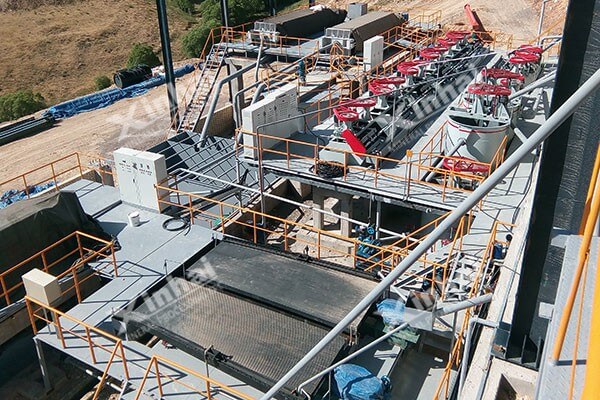
Gravity separation also called gravity concentration, which is a mineral processing method for separating minerals according to different mineral densities. When using gravity separation method, a medium (air, water/heavy liquid or heavy suspension) is essential besides various gravity separation equipment. During the gravity separation process, the ore particles are subject to gravity (if the process takes place in centrifugal force field, centrifugal force is the main force), mechanical forces exerted by the equipment and the force of the medium.The ingenious combination of these forces makes the different density of the ore particles produce different speeds and tracks of movement, and eventually achieve the gravity separation process.
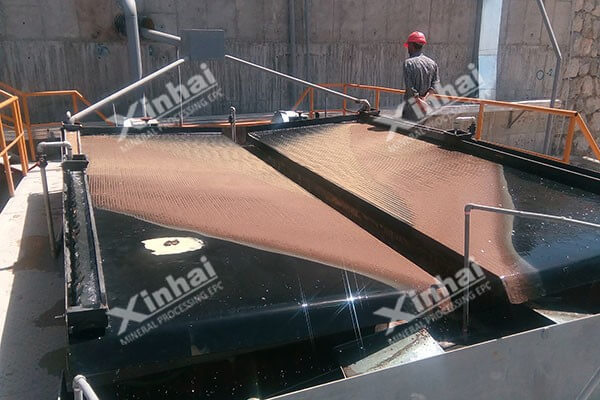
The essence of gravity separation can be summarized as the “dispersing-layering” and “transferring-separating” processes. The bulk materials placed in the separation equipment become dispersed driven by the buoyancy, power or other mechanical force in the moving medium, and due to the different motion state during sedimentation, the ore with different density (or particle size) is getting layered and transferred. Gravity separation method is to achieve layered process by mineral density and to achieve separation by the action of the moving medium. The basic law of gravity separation process can be summarized as follows: “dispersing-layering-separating”.
The gravity separation method has the characteristics of simple equipment structure and low operation cost, so it can be used when the conditions are suitable.
1. Gravity separation equipment is simple to manufacture, has good stability, convenient operation and low cost. The technology is also relatively mature.
2. In the ore dressing production, gravity separation method does not consume expensive chemicals and the environmental pollution of tailings discharged is small.
3. Using gravity separation method, we can discard the block rock and coarse tailings, and recover the weak magnetic mineral with coarser grain size;
4. Gravity separation method can be used as combined method with other mineral processing methods to recover weak magnetic minerals with fine grain size.
5. For the minerals with coarse disseminated grain size, gravity separation can obtain better beneficiation indicators. Using gravity separation, we can get coarse concentrate or mixed concentrate, as well as final concentrate.
Currently, gravity separation is mainly applied to:
1. The separation of precious metals such as gold and platinum;
2. The separation of tungsten ore and tin ore;
3. It is widely used in the treatment of sand minerals containing rare metal elements, such as the separation of seashores and ore containing zirconium ore and titanium ore;
4. The separation of hematite and limonite;
5. The separation of manganese ore;
6. The separation of coal and vermiculite in the coal preparation plant;
7. Separation of some non-metallic minerals from gangue, such as asbestos, mica, kaolin, sepiolite and diamond;
8. For the non-ferrous metal ores such as copper,lead and zinc which are mainly processed by flotation, the gravity separation method is a common beneficiation process for pre-concentration.
9. The separation methods according to particle size used in gravity separation, such as classification,de-sludge, etc., are indispensable operations in almost all mineral processing plants.
1. Jig Separation:
During the jig separation process, the water flow is not constant, and the dynamic action of the fluid changes at all times, so that the looseness of the bed layer (the volume fraction of the separation medium in the bed layer) also changes periodically. The bed layer is moved by a variable flow of water in which particles are loosely suspended, but not simply interference sedimentation. During the whole separation process, the bed layer is not too loose, and the static pressure between particles plays an important role in the stratification transferring.
There are many types of jigging machine, including piston jigs,diaphragm jigs, air pulsating jigs, hydraulic pulsating jigs, and moving sieve jigs. The most used in the metal processing plants is the diaphragm jig.
The diaphragm jig can be divided into different types according to the position of the diaphragm installation: side operated diaphragm jig (the diaphragm is located beside the jig chamber), push diaphragm jig (also known as the cone diaphragm jig, the diaphragm horizontally is located in the below of jig chamber), lateral action diaphragm jig (the diaphragm is installed vertically on the lower side wall of the chassis, with the outer diaphragm and the inner diaphragm. It mainly deals with coarse disseminated ore and has high beneficiation efficiency). Air pulsating jigs are commonly used in the coal processing industry.
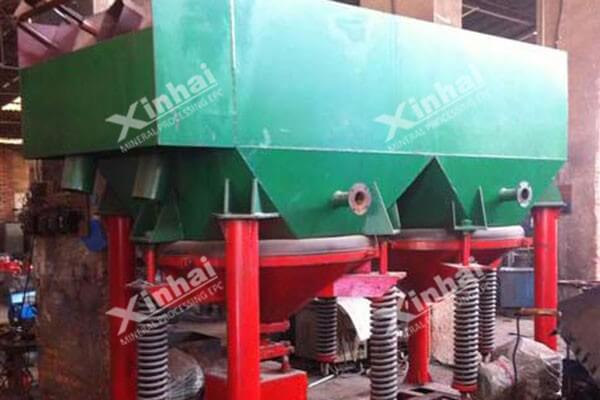
2. Shaking Table (Concentrating Table)Separation:
Shaking table separation is the process of separating the ore particles based on mineral density by means of the combined action of mechanical shaking and water flushing. Shaking table is the main equipment for the gravity separation plant. It is characterized by high ore ratio and are commonly used to obtain the final concentrate and meantime to separate the final tailings,which can effectively process the granular materials. The upper limit of separation particle size is 3 mm,and the lower limit can be up to 0.4 mm if tin and wolfram are separated. Shaking table separation is mostly used to separate materials less than 1 mm.
According to the mechanical structure, shaking table can be divided into 6S shaking table, Yunxi type shaking table, spring table,suspended multi-deck shaking table and flotation shaking table.
As an efficient gravity separation equipment for fine-grained ore separation, shaking table is widely used for the separation of tungsten, tin, tantalum,niobium and other rare metals and precious ores, and also for the separation of ferro manganese ore. In recent years, shaking table have also been used to recover iron from tailings in magnetic separation plants and to separate non-metallic minerals such as mica.
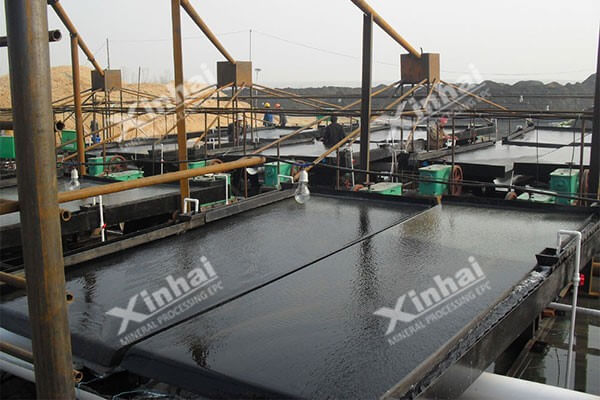
3. Chute Separation:
The chute separation is a separation process making use of a beveled water flow. The mixture of ore particles is fed into a chute with a small inclination angle, generally 3 to 4 degrees and not more than 6 degrees. The ore particles are layered by the combined action of the momentum of the water flow, the gravity, centrifugal force and the frictional force of the ore particles. Since the velocity distribution of the water flow in the trough is small in the upper and lower layers, the denser ore particles are concentrated in the lower layer, and are subjected to less water flow force and larger groove bottom friction force, and slowly move forward along the groove bottom. While the ore particles with smaller density are concentrated in the upper layer and are carried by the water stream to flow out of the tank at a faster rate. Then, the two products with different density, namely concentrate and tailings, can be obtained by intercepting the layers separately.
According to the force exerted by the ore particles,the chute can be divided into gravity chute and centrifugal chute; according to the selected particle size, the chute can be divided into coarse chute, ore chute and slime chute. The coarse-grained chute is often replaced by a gravity separation jig because it requires large number of manual operations. The coarse-grain chute and the ore sand chute are mainly used for the sand ore of gold, platinum and tin and other rare metal ore, such as monazite, zircon and other sand ore. The slime chute is often used for some ore gravity separation,like tungsten ore and tin ore.
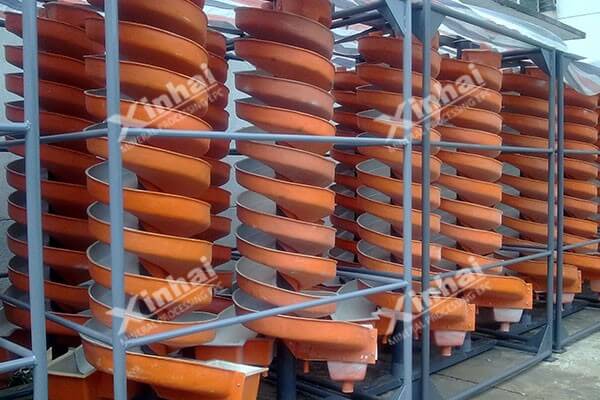
4. Centrifugal Gravity Separation:
The centrifugal concentrator (horizontal centrifugal chute) is a rotary type intermittent chute. It belongs to the flow film separation equipment under the action of centrifugal force, mainly making use of the different centrifugal force and gravity force for separation. Centrifugal concentrator has been widely used in primary gravity separation process for tin ore, tungsten ore and hematite ore.
As a high-efficiency slime gravity separation equipment, the centrifugal concentrator has the characteristics of simple structure, reliable operation, high separation index, large production capacity and finer particle size. However, centrifugal concentrator also has some disadvantages like intermittent operation, complex auxiliary equipment required and low enrichment ratio.
5. Heavy Medium Gravity Separation:
Heavy medium gravity separation is to put the ore crushed to a certain particle size into a fluid with a density greater than water (ie heavy medium). According to the principle of Archimedes buoyancy, the ore particles with a density less than the medium will float, and the ore particles with a density greater than the medium will sink, so the two products can be intercepted respectively to realize the heavy medium gravity separation.
The separation effect of heavy medium gravity separation is mainly determined by the density of the ore particles, and the influence of the size and shape of the ore particles is small, so the separation precision is relatively high, the minerals with a small difference in density (such as 0.1 g/cm3) can be well separated. Material size range can be wide and processing capacity is large.
1. 8000 TPD Gold Gravity Separation- Heap Leaching-All-sliming Cyanidation Projects in Guinea
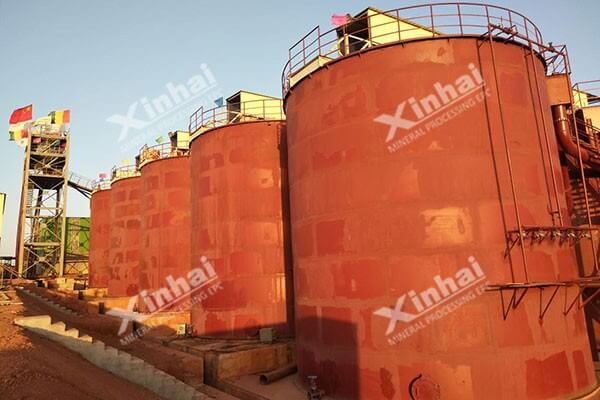
Technical Process:
Raw ore pulping - grinding and classification - gravity separation - cyanidation leaching - desorption electrolysis
2. 600 TPD Gold Gravity Separation and Flotation Plant in Hunan, China
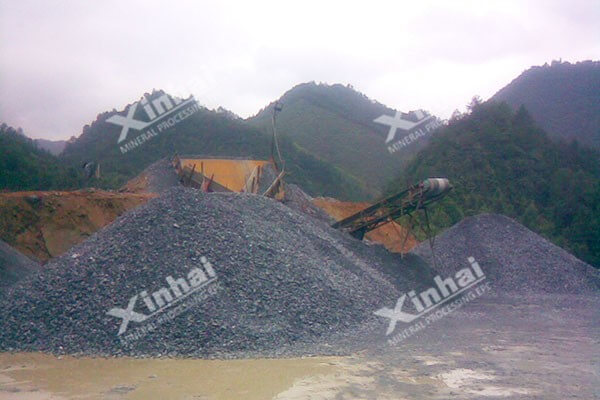
Technical Process:
Two stage one closed circuit crushing and screening - one closed circuit grinding - gravity separation - flotation separation (one roughing, two scavenging and two concentrating) - concentrate dewatering - tailings dewateting process
3. 240 TPD Gold Gravity Separation Plant In Sudan
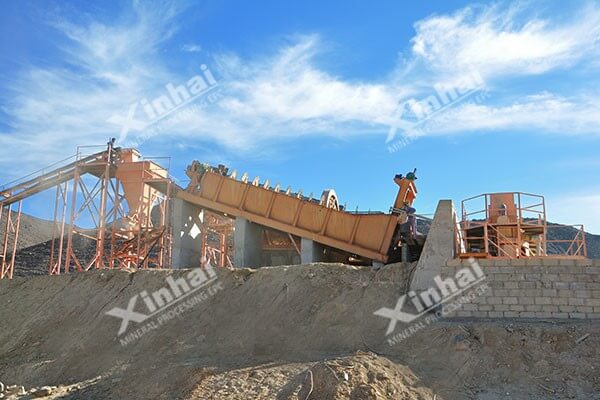
Technical Process:
Two stage open circuit crushing - one closed circuit grinding - multiple stage gravity separation process